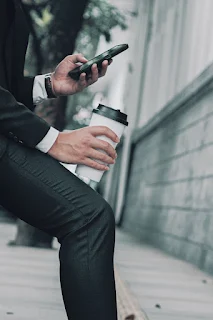How to use color grading to create a specific mood or atmosphere in your photos
Tips on how to use color grading to create a specific mood or atmosphere in your photos:
Choose a color palette.
A color palette is a set of colors that work well together and create a cohesive look. When choosing a color
palette for your photo, you need to consider the mood or atmosphere you want to create. For example, if you want to create a warm and inviting photo, you might choose a color palette with warm colors, such as reds, oranges, and yellows. If you want to create a cool and serene photo, you might choose a color palette with cool colors, such as blues, greens, and purples.
You can use a color wheel to help you choose a color palette. The color wheel is a circular chart that shows the relationships between different colors. Complementary colors are colors that are opposite each other on the color wheel. They create a high-contrast look that is often used to create a sense of energy or excitement. Analogous colors are colors that are next to each other on the color wheel. They create a more subtle look that is often used to create a sense of harmony or peace. Triadic colors are three colors that are evenly spaced around the color wheel. They create a more balanced look that is often used to create a sense of excitement or creativity. Monochromatic colors are all shades of the same color. They create a very simple and elegant look that is often used to create a sense of sophistication or mystery.
Consider the mood or atmosphere you want to create.
Once you've chosen a color palette, you need to think about the mood or atmosphere you want to create with your photo. The colors you choose will play a big role in creating the desired mood. For example, if you want to create a warm and inviting photo, you might choose warm colors, such as reds, oranges, and yellows. These colors are often associated with feelings of happiness, excitement, and energy. If you want to create a cool and serene photo, you might choose cool colors, such as blues, greens, and purples. These colors are often associated with feelings of calmness, peace, and mystery.
Use color to guide the viewer's eye.
Color can be used to direct the viewer's eye to specific areas of your photo. For example, you could use a bright color to draw attention to a focal point, or you could use a cool color to create a sense of depth. If you want the viewer to focus on a particular object in your photo, you can use a bright color to make that object stand out from the rest of the image. For example, if you're taking a photo of a flower, you could use a bright red or yellow to make the flower pop against the background. You can also use color to create a sense of depth in your photo. For example, you could use a cool color in the foreground and a warm color in the background to create the illusion of distance.
Experiment with different color grading techniques.
There are many different color grading techniques that you can use to achieve different effects. You can try adjusting the hue, saturation, and luminance of different colors, or you can use filters and presets to create pre-defined looks. The best way to learn is to experiment and see what works for you. When you're first starting out, it can be helpful to experiment with different color grading presets to see how they affect your photos. Once you have a better understanding of how color grading works, you can start to experiment with adjusting the hue, saturation, and luminance of different colors to create your own custom looks.
Don't be afraid to break the rules.
There are no hard and fast rules when it comes to color grading. The most important thing is to experiment and have fun with it. Don't be afraid to try different things and see what you can create. Sometimes the best results come from breaking the rules and trying something unexpected. So don't be afraid to experiment and see what you can come up with.
Examples
Triadic color grading:
Triadic color grading uses three colors that are evenly spaced around the color wheel, which can create a sense of balance, harmony, and creativity. It is often used in photos of abstract art, landscapes, and fashion. For example, you could use triadic color grading to create a photo of a cityscape that feels vibrant and exciting.
Monochromatic color grading:
Monochromatic color grading uses only one hue, which can create a sense of simplicity, elegance, and sophistication. It is often used in photos of fashion, architecture, and still life. For example, you could use monochromatic color grading to create a photo of a flower that feels elegant and timeless.
Warm color grading:
Warm color grading can be used to create a sense of warmth, happiness, and excitement. It is often used in photos of nature, food, and people. For example, you could use warm color grading to create a sunset photo that feels cozy and inviting.





0 Comments